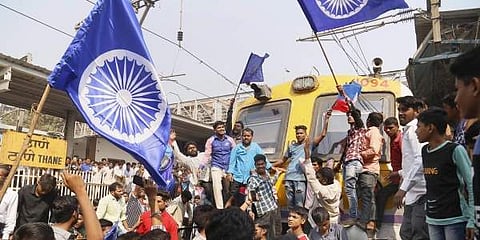

January 1 marks the 202nd anniversary of the Battle of Koregaon, also known as the Koregaon Bhima after the river that flows close to it. Over the last two years though, we see the words ‘Bhima Koregaon’ associated more with the police, courts, jail sentences, detainments, interrogations and protests. A total of 16 people including, academicians, social activists, writers, poets and professors have been arrested over the last two years. The oldest in the lists being above 80 years old. So what did happen at Bhima Koregaon 200 years ago and why does it continue to be relevant in our lives?
On January 1, 1818, the British East India Company and the Peshwa faction of the Maratha Confederacy at Koregaon Bhima went to battle. The Company troops included the Mahars, the ‘untouchables’ who were discriminated against and ‘notoriously mistreated’ by the so-called upper castes, the Brahmins. Which is why the place became historically significant for the Mahar community. While it is believed that there was no one winner at the battle, it is believed that 28,000 strong force led by Peshwa Baji Rao II were met by an 800-strong Company force. Led by Captain Francis Staunton, the Company troops defended their position for nearly 12 hours, before the Peshwa's troops ultimately withdrew, fearing the imminent arrival of a larger British force.
The East India Company set up a ‘victory pillar’ in Koregaon, the inscription of the pillar declared that Captain Staunton's force "accomplished one of the proudest triumphs of the British Army in the East." The pillar inscription features 49 Company soldiers who were killed in action and 22 of those names end with the suffix -nac (or-nak) which is used exclusively by the people of the Mahar caste. The obelisk used to be on the Mahar Regiment’s crest until we got independence and even though it was set up by the British, it has become a memorial for the Mahars.
On January 1, 1927, Dr BR Ambedkar visited the site and ever since thousands of Ambedkarites turn up at Bhima Koregaon on New Year’s Day to celebrate a victory over the upper castes. Every year, lakhs of Dalits organise a peaceful commemoration. Except for three years ago, in 2018, when violence broke out at the site. Tensions started over who had conducted the last rites of the Maratha ruler. Many were injured in the violence and there were mass arrests of Dalits subsequently as well. Fingers have been pointed towards two Hindu fundamentalist leaders, against Sambhaji Bhide and Milind Ekbote, who were slapped with FIRs for instigating violence against the Dalits.
On March 14, 2018, the Pune police arrested Milind Ekbote. On April 22, 2018, a nineteen-year-old Dalit witness, whose house was burnt in the violence, was found dead in a well. Her family alleged that she was under intense pressure to withdraw her statement. Her brother, Jaideep, also a witness, had been arrested by Pune Rural Police on charges of attempt to murder. Ever since, 16 prominent activists, professors, writers have been jailed with allegations of instigating the violence. This list includes Jyoti Raghoba Jagtap, Sagar Tatyaram Gorkhe, Ramesh Murlidhar Gaichor, Sudhir Dhawale, Surendra Gadling, Mahesh Raut, Shoma Sen, Rona Wilson, Arun Ferreira, Sudha Bharadwaj, Varavara Rao, Vernon Gonsalves, Anand Teltumbde, Gautam Navlakha, Hany Babu and Father Stan Swamy.
